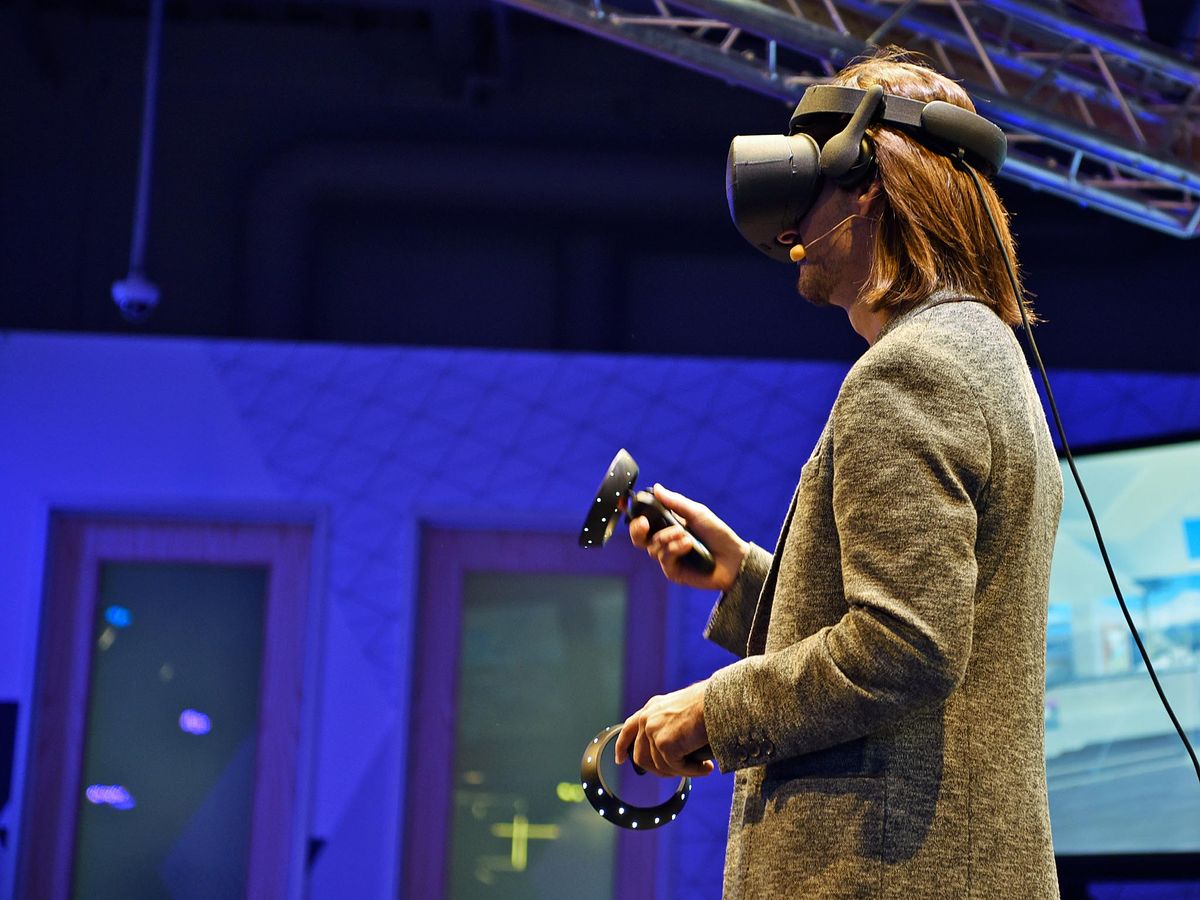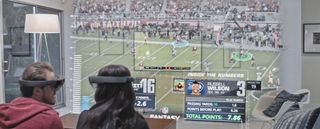Microsoft needs to partner with the NFL and other sports to mainstream Windows Mixed Reality
For Windows Mixed Reality to go mainstream Microsoft should partner up with the NFL, UFC, and popular music tours to get noticed.

This week Microsoft released the Windows 10 Fall Creators Update to over 500 million PCs. One of the hallmark features that's included in every release for free is the Windows Mixed Reality (WMR) experience. While users still need to pick up one of the many new head-mounted displays (HMD) to join in the virtual reality barrier to entry has never been lower.
One problem Microsoft faces is how to get people to use Windows Mixed Reality. Videos games are one fashionable way, but to hit the public zeitgeist, Microsoft will have to go bigger. Partnering up with sports franchises like the NFL, NBA, and even mixed-martial arts like UFC could be that path. Adding in some media concerts and content on Netflix and Hulu could be another.
Video games are not enough

Playing virtual reality games like Superhot, Minecraft, and various other titles is a great start for Windows Mixed Reality, but it's also the obvious strategy.
Merely mentioning virtual reality (or Mixed Reality, as Microsoft calls it) suggests video games. Combined with PC gamers and Steam VR Microsoft is already doing an excellent job as positioning WMR to that audience.
Primer: What exactly is Microsoft's 'Windows Mixed Reality?'
But gaming and virtual reality have been around for a couple of years now, and while it's growing at least compared to console and mobile gaming, it's still somewhat niche. Either way, Microsoft seems to have its gaming strategy down for WMR, so I'm not concerned about that.
What needs to happen is general consumers – the masses, if you will – need to see a compelling reason to drop $300 on WMR that goes beyond gaming (or "productivity").
Get the Windows Central Newsletter
All the latest news, reviews, and guides for Windows and Xbox diehards.
Windows Mixed Reality and sports ball
Sports is typically the one unifier amongst Americans (well, until recently at least). Even in Europe, where football has a strong tradition, people come together to support their favorite team.
Upwards of 22 million people in the U.S. watch the NFL, 30 million viewers tuned into the NBA Finals. Even baseball, which has seen near record lows for viewership, still pulls between 7 and 10 million people. The UFC, the most significant mixed-martial arts promoters (and one of the fastest growing areas in sports), can pull in 5 million Pay Per Views (PPV).
Microsoft outlines its plans for Windows Mixed Reality
Now imagine that during Super Bowl LII (February 4, 2018) Microsoft and the NFL offer a way to watch the game in Windows Mixed Reality? Super Bowl LI pulled in 111 million viewers. There's a reason why advertising is so massive during that game. Being able to strap on a Windows Mixed Reality HMD to watch the game in 360-degrees, or view from the sidelines as if you were there could be a game changer – even if it's a bit of a novelty. Or maybe just start small and go with the famous Super Bowl Half-Time show. It's a start.
Microsoft and the NFL are no strangers either. The league currently uses Microsoft Surface tablets on the field and for the broadcast. Microsoft sells NFL-branded Surface Type Covers. Microsoft even teased what Windows Mixed Reality and the NFL could look like using HoloLens back in 2016 – clearly, both groups are at least thinking about this already.
By bringing Windows Mixed Reality to the wide world of sports, Microsoft could finally give a good reason why more than just gamers should want the technology. After all, there are a lot of Windows 10 computers already in households with Windows Mixed Reality just waiting to be utilized. The groundwork is already there.
Concerts, live events and more
Musicians are already getting on board with different viewing experiences. Metallica recently used a 360-degree virtual reality camera to shoot some of the concerts on its 2017 tour. Strapping on a VR headset and fans get to see the show from the stage with the ability to look all around them as if they were there.
Windows Mixed Reality, which is more powerful than what a Samsung Android phone is capable of, could do the same plus more with better fidelity, audio, and more.
In recent years, there has been a lot of giant music concerts, e.g., Roger Waters and his revamped The Wall tour, which is already embracing every new technological innovation they can try out.
Tying in Windows Mixed Reality – either through sponsorships or partnerships – would be a great way to reach millions of users who don't yet know their laptops can already do this stuff.
Windows Mixed Reality must find its way
I've noted many times that holograms, mixed reality, virtual reality, etc. has its place in today's world, but finding the secret to going mainstream with it is a test. Microsoft – like Apple and Google – need to demonstrate that this tech is more than just a gimmick or one-time use novelty.

The most prominent hindrance now – besides costs and consumer education – is user isolation and its anti-socialness. I'm not entirely sure slapping on an HMD in the middle of a Super Bowl party will solve that or make it any less weird.
5 things you (really) need to know about Windows Mixed Reality
Apparently, the real future with Windows Mixed Reality lies with "smart" headsets that jump between opaque-lenses for virtual reality experiences and clear for mixed reality ones. Microsoft's head of Windows Mixed Reality and HoloLens inventor, Alex Kipman, has already hinted that such a headset is in the works and is the real plan.
Until then getting current users interested in Windows Mixed Reality through mainstream and popular media events on TV and streaming services could be the necessary linchpin to raise awareness. Hulu is now offering some Windows Mixed Reality experiences which is a great start, but please let me watch the next McGregor UFC fight, or Brady throwing the next Super Bowl-winning catch, with my Dell Visor.

Daniel Rubino is the Editor-in-chief of Windows Central. He is also the head reviewer, podcast co-host, and analyst. He has been covering Microsoft since 2007 when this site was called WMExperts (and later Windows Phone Central). His interests include Windows, laptops, next-gen computing, and wearable tech. He has reviewed laptops for over 10 years and is particularly fond of 2-in-1 convertibles, Arm64 processors, new form factors, and thin-and-light PCs. Before all this tech stuff, he worked on a Ph.D. in linguistics, performed polysomnographs in NYC, and was a motion-picture operator for 17 years.